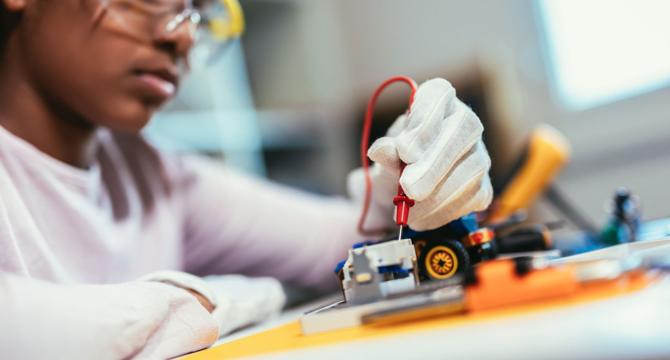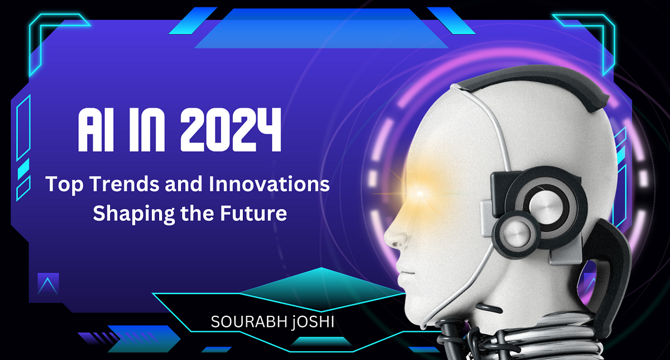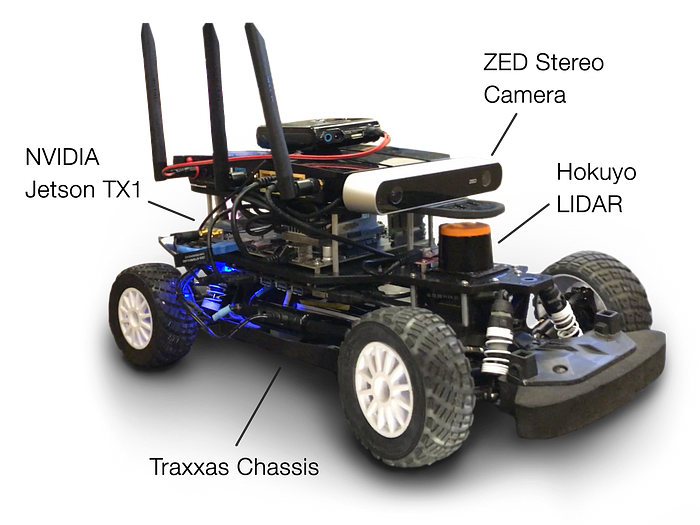Robotics News
The Robot Report
230

J&J reports positive Monarch robotic bronchoscopy data
- Johnson & Johnson MedTech reported positive results from a study of its Monarch platform for robotic bronchoscopy procedures, showing a high success rate in reaching and biopsying lung nodules with a good safety profile.
- The study, TARGET, involved 679 patients across 21 global sites and demonstrated a diagnostic yield of 83.2% with Monarch reaching the lesions in 98.7% of cases.
- Investigators identified factors associated with higher diagnostic yield and recognized robotic-assisted bronchoscopy as a safe and effective option that could elevate the standard of care for patients.
- Johnson & Johnson is committed to advancing innovation in robotic-assisted procedures, with the Monarch system enabling minimally invasive access to hard-to-reach lung nodules, while also working on bringing its OTTAVA Robotic Surgical System to the market.
Read Full Article
13 Likes
Unite
438

Image Credit: Unite
Ryan Ries, Chief AI & Data Scientist at Mission – Interview Series
- Dr. Ryan Ries, Chief AI and Data Scientist at Mission, brings over 15 years of experience in data and engineering, specializing in AI and AWS data infrastructure.
- Mission, a cloud-focused company, offers end-to-end cloud services and AI solutions for AWS customers, emphasizing security, scalability, and innovation.
- Dr. Ries highlights the evolution of AI from hand-coding to scalable models accessible through hyperscalers like AWS.
- Mission integrates security into all aspects of its services, focusing on building secure and scalable AI infrastructure for AWS customers.
- The company follows an end-to-end approach from understanding business needs to deploying generative AI solutions, ensuring robust and scalable outcomes.
- Mission enables businesses to innovate confidently with experienced data scientists and secure, scalable AI solutions.
- Generative AI offers value in intelligent document processing and chatbots, automating tasks efficiently, although hype often surpasses practical applications in some areas.
- Vibe coding involves using large language models for rapid code generation, showing a shift towards more intuitive AI development approaches.
- Organizations should empower AI officers with clear mandates to align AI strategy with existing leadership structures, ensuring impactful contributions.
- When hiring for AI roles, deep AI expertise, curiosity, and innovation drive success in implementing high-stakes AI projects.
Read Full Article
26 Likes
Unite
208

Image Credit: Unite
The Future of Investment Research with Autonomous AI Agents
- Autonomous AI agents are revolutionizing the landscape of investment research in the finance industry by automating tasks that require high cognitive abilities.
- These AI agents can analyze vast datasets, identify patterns, and generate insights quickly and accurately, transforming traditional research approaches.
- Tools like those developed by Wokelo AI are custom-built for institutional finance and have been embraced by firms such as KPMG and Google.
- AI agents enhance productivity by reducing research hours per deal and allowing analysts to focus on strategic decision-making.
- The scalability and accuracy of AI agents make them invaluable for identifying market trends, anomalies, and investment opportunities at a pace unattainable by humans.
- Challenges such as data quality and regulatory compliance are being addressed to ensure the reliability and ethical use of AI in financial research.
- The future of investment research involves a collaborative approach between AI agents and human analysts, leveraging the strengths of both to enhance decision-making processes.
- Analysts of the future are likely to evolve into curators and strategic partners to AI agents, requiring interdisciplinary skills and a deep understanding of machine learning.
- The integration of AI in investment research is expected to continue evolving, with agents analyzing various data types and even predicting investor behavior.
- Adapting to the use of autonomous AI agents in research will be crucial for firms seeking to stay competitive and gain an edge in the rapidly changing financial landscape.
- Embracing this new paradigm in investment research puts early adopters at an advantage, reshaping how analysts work alongside AI to achieve unparalleled insights.
Read Full Article
12 Likes
Unite
4

Image Credit: Unite
How AI Made Job Search as Convenient as Ordering an Uber
- AI can significantly shorten the job search process from months to weeks by assisting job seekers with various tasks.
- Uncertainty in the labor market and anxiety about the future of careers have become common in today's workforce.
- AI is predicted to create new jobs while also replacing many existing roles, particularly in white-collar professions.
- Technological advancements, like AI, are transforming the job search process and making it more efficient and effective.
- AI tools like LinkedIn, Google's Career Dreamer, and Global Work help job seekers with recommendations, applications, and resume optimization.
- AI streamlines tasks such as CV creation, cover letter writing, security verification, and job application submission.
- Job scams have increased, but AI algorithms help filter out fraudulent listings and protect job seekers.
- AI enables faster learning and upskilling through personalized plans, smart recommendations, and microlearning opportunities.
- AI can assist with interview preparation, career coaching, and guidance for professionals looking to make significant career shifts.
- Leaders need to effectively balance AI integration, employee performance, and real-world experience to leverage its benefits and revolutionize the future of work.
Read Full Article
Like
Discover more
Unite
221

Image Credit: Unite
AI Hype Fatigue: Why Journalists Are Snoozing on Your Press Release
- The AI landscape is saturated with companies claiming to be AI-focused, leading to journalists being overwhelmed by volume and struggling to distinguish real innovation from imitation.
- The media ecosystem is flooded with AI-related news, covering various sectors like finance, healthcare, manufacturing, and retail, often rebranding existing tools as AI-powered.
- Journalists are inundated with pitches that lack differentiation, resulting in many companies being overlooked or receiving a pass on their pitches.
- Tech giants like OpenAI, Microsoft, Google, and Meta dominate media coverage due to their resources, investments, and headline-grabbing initiatives.
- Journalists now approach AI stories with skepticism, seeking proof of proprietary AI models, substantial impact, performance metrics, and real-world data.
- The hype cycle surrounding AI has led to media fatigue, where overpromising without tangible results leads to disillusionment and potential dismissal by the media.
- To stand out, AI vendors need to focus on specificity, impact demonstration, data-backed evidence, third-party validation, and building relationships with journalists.
- In the AI gold rush, attention is given to vendors offering genuine, differentiated impact, emphasizing the shift from volume to value in media coverage.
- The key for AI vendors is to prioritize credibility, media alignment, and specificity in their communication strategies to break through the noise and capture journalists' interest.
- Being smarter, not louder, is crucial for AI companies to secure media attention and convey their genuine outcomes in a crowded and competitive landscape.
Read Full Article
13 Likes
Unite
153

Image Credit: Unite
LuminX Secures $5.5M to Make Warehousing Intelligent with Vision Language Models on the Edge
- LuminX, a San Francisco-based AI company, has secured a $5.5 million seed funding round to embed Vision Language Models (VLMs) in warehouse environments for inventory automation.
- LuminX utilizes VLMs on edge devices to provide real-time visibility into inventory, aiming to eliminate inefficiencies caused by manual processes and fragmented data.
- The VLMs deployed by LuminX combine visual perception with natural language understanding to interpret visual scenes, enhancing automation and operational insight in warehouse management.
- LuminX's funding will focus on VLM R&D, scaling edge deployment, and accelerating go-to-market strategies to revolutionize warehouse automation with multi-modal AI and edge computing.
Read Full Article
9 Likes
The Robot Report
330

Learn how gearboxes enable next-gen warehouse automation
- Gearboxes and motion-control technology are essential for warehouse automation, with a focus on robotics and automation in distribution centers and warehouses.
- A webinar on Tuesday, June 3, 2025, will discuss the latest requirements for gearing, drives, and controllers to enable applications like piece picking and palletizing, emphasizing reliability for accuracy and long-term use.
- The webinar will cover the demand for warehouse robots, challenges, opportunities, and considerations for selecting suppliers or partners in the automation industry.
- The presenter, Eugene Demaitre, the editorial director for robotics at WTWH Media, will share insights based on research conducted by Dan Kara, a former vice president at WTWH Media.
Read Full Article
19 Likes
Nvidia
18

Image Credit: Nvidia
Researchers and Students in Türkiye Build AI, Robotics Tools to Boost Disaster Readiness
- In Türkiye, researchers, students, and developers are utilizing AI and robotics technologies to enhance disaster preparedness following a devastating earthquake two years ago.
- Supported by an initiative from NVIDIA and Bridge to Türkiye Fund, projects focus on AI-powered inspection, search and rescue operations, and robotics education.
- The Disaster Response Innovation and Education Grant provided resources like NVIDIA Jetson Nano Developer Kits and funding to aid in the development of various tools and courses.
- Projects include training robots for search and rescue tasks, creating tools for testing water and food contamination, and offering hands-on programming courses.
- An unmanned ground vehicle (UGV) equipped with advanced cameras and AI computing from NVIDIA aids in post-earthquake search and rescue operations at Ankara University.
- Students at Hacettepe University are learning robotics skills, including SLAM, using NVIDIA Jetson Nano Developer Kits to build robots for navigation in disaster environments.
- Bilkent University researchers developed a mini supercomputer cluster based on NVIDIA Jetson Nano kits for rapid pathogen screening in disaster zones, helping prevent disease outbreaks.
- At Izmir Institute of Technology, nearly 80 undergraduates are gaining AI and robotics knowledge through hands-on projects with NVIDIA Jetson Nano devices and CUDA technology.
- The initiative aims to increase expertise in AI and robotics, reduce casualties in future disasters, and provide practical solutions for post-disaster scenarios in Türkiye.
- Various academic institutions in Türkiye are actively leveraging NVIDIA's resources and educational support to build innovative, life-saving technologies.
Read Full Article
1 Like
The Robot Report
54

Congressional Robotics Caucus relaunches to help U.S. industry
- The Congressional Robotics Caucus has been relaunched to address U.S. robotics policy and industry priorities.
- Rep. Jim McGovern announced the relaunch with co-chairs Bob Latta, Haley Stevens, and Jay Obernolte.
- The caucus aims to discuss issues around robotics and promote U.S. economic competitiveness.
- Federal, state, and investor focus on AI needs to align with hardware and workforce initiatives for manufacturing reshoring.
- The U.S. faces competitive challenges with China's significant investment in robotics and AI.
- The caucus plans to brief lawmakers on automation's importance and responsible deployment of robotics.
- Rep. Stevens highlighted the role of robotics in driving U.S. competitiveness and manufacturing.
- Rep. Obernolte emphasized the transformative impact of robotics across various sectors.
- The Robotics Caucus aims to support innovation, global leadership, and policies reflecting American values.
- Co-chairs plan to engage with industry experts and stakeholders to shape key policy developments.
Read Full Article
3 Likes
Blackenterprise
40

Image Credit: Blackenterprise
Prairie View A&M Robotics Team Finishes Strong In National Competition
- Prairie View A&M's Drone Competition Team secured fourth place in the 2025 Raytheon Autonomous Vehicle Challenge, a national competition for top engineering students.
- The challenge required teams to develop self-driving drones that could identify and communicate a landing zone for an autonomous vehicle delivering a package.
- Despite being first-time participants, Prairie View's team advanced to the finals and showcased the school's academic strength and hands-on learning.
- The students dedicated months to preparing for the competition, focusing on aiding injured soldiers on a battlefield with their drone design and coordination skills.
Read Full Article
2 Likes
Insider
257
Image Credit: Insider
I visited Amazon's robot factories and got an inside look at how it builds and trains them
- Amazon has heavily invested in robotics and automation for its fulfillment centers, with a fleet of more than 750,000 robots and over 16,000 employees working on the operation.
- The article provides an inside look at how Amazon builds and trains its robots in facilities outside Boston, showcasing the advanced technology used in manufacturing.
- Amazon's latest mobile drive unit, Proteus, is designed to navigate around objects and humans autonomously, enhancing efficiency in warehouse operations.
- The facility in North Reading, Massachusetts, previously home to Kiva Robotics, now showcases the evolution of robot technology within Amazon.
- Amazon's approach to robot design involves working with fulfillment center teams to identify areas for automation, ultimately focusing on improving delivery speed and network efficiency.
- The manufacturing process at Amazon includes building Hercules and Proteus robots, each serving different functions within the fulfillment centers.
- Robots like Pegasus and Robin, along with Proteus, work together seamlessly to transport packages, showcasing the integration of robots alongside human workers.
- Amazon's manufacturing facilities implement automated tools like torque tools and strict quality control processes to optimize efficiency and traceability of robotic parts.
- Testing technology innovations at Amazon have revolutionized the efficiency of robot testing, reducing testing time significantly and simulating real fulfillment center environments.
- The article highlights the assembly process, testing, and 'graduation' of Amazon's robots before they are shipped out to fulfillment centers for operational use, emphasizing safety and precision.
Read Full Article
14 Likes
Medium
176

Image Credit: Medium
AI in 2024: Top Trends and Innovations Shaping the Future
- Generative AI is revolutionizing the creative industries by providing unique perspectives and faster production capabilities.
- The combination of AI and quantum computing is enabling faster and more accurate data processing, benefiting scientific research, drug discovery, and financial modeling.
- AI-driven tools in personalized medicine are analyzing patient data in real-time to improve healthcare solutions and treatment outcomes.
- The focus on building fair and transparent AI models is crucial for addressing ethical considerations and regulatory frameworks as AI continues to advance.
Read Full Article
10 Likes
Medium
1.7k

Image Credit: Medium
Practical SLAM Implementation in C++ for Autonomous Robots
- The autonomous robotics industry is growing rapidly with applications in warehouse automation and autonomous vehicles.
- Simultaneous Localization and Mapping (SLAM) is crucial for robots to navigate unknown environments while creating maps in real-time.
- A practical guide for implementing SLAM in modern C++ is available for robotics engineers to deploy reliable localization solutions.
- SLAM solves the localization challenge in robotics by estimating the robot's trajectory and the environment's structure simultaneously based on sensor observations.
Read Full Article
26 Likes
Medium
45

Image Credit: Medium
HardTech Reads: The AI & Robotics Revolution vol.33
- The AI and Robotics Revolution is in full swing with advancements like live humanoid boxing matches in China, increased autonomy in surgical robots, and US executive orders to revive nuclear and uranium supply.
- Agibot, a Chinese startup, is rapidly mass-producing humanoid robots, challenging Tesla's timeline for mass production.
- AI-powered robots are entering operating rooms with growing autonomy, which could help address the global shortage of surgeons.
- Companies like John Deere are targeting full-farm automation by 2030 to improve productivity and address labor shortages.
- InventWood's Superwood, stronger than steel, could revolutionize construction and aerospace materials with its high strength-to-weight ratio.
- Robot.com, based in Medellín, has become a global automation leader with over 500 robots deployed across the US and expanding internationally.
- The robotics market is shifting towards specialized robots for specific tasks, driving rapid growth in the sector.
- Recent funding rounds highlight companies like Persona AI, The Nuclear Co., and CX2 investing in humanoid robots, nuclear energy, and electronic warfare technologies.
- The industry is maturing with a focus on practical solutions and real-world applications, as seen at the Automate 2025 event.
- The article emphasizes the need for Australia to invest in domestic space manufacturing for economic prosperity and national security.
Read Full Article
2 Likes
For uninterrupted reading, download the app